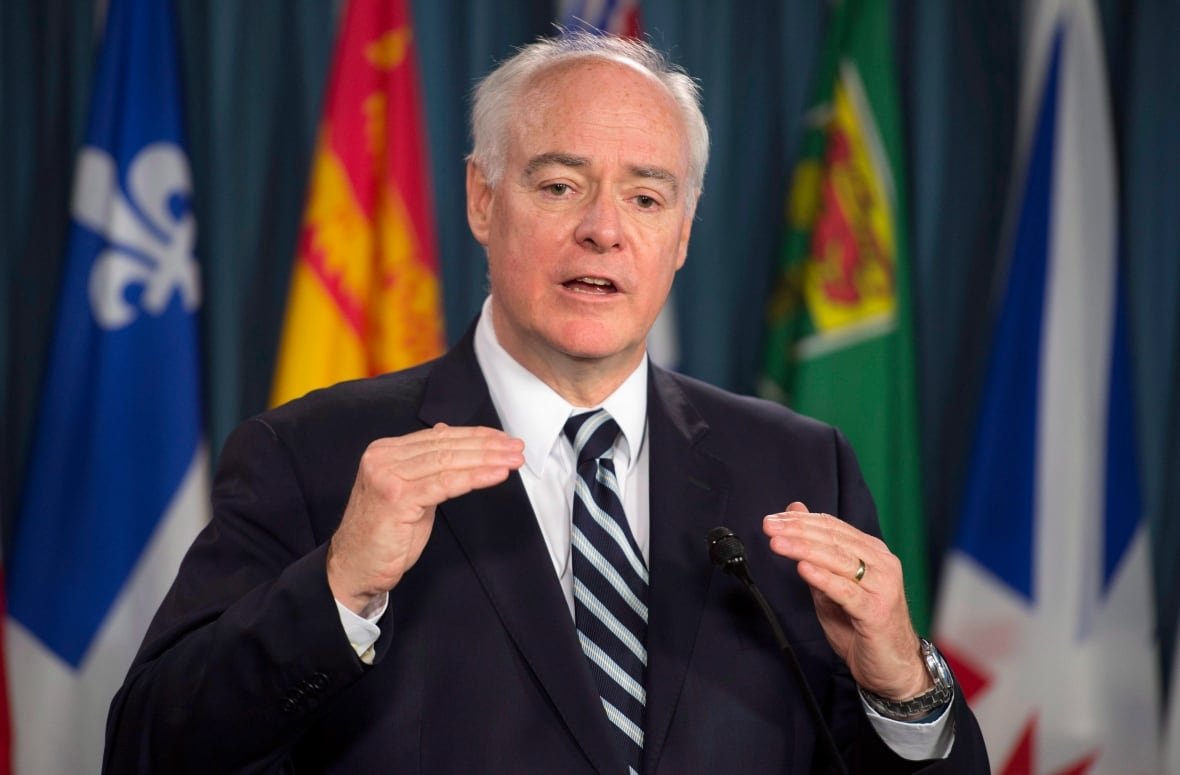Canada’s premiers and federal officials are pitching cutting interprovincial trade barriers to guard against a looming trade war with the United States, arguing it could boost the Canadian economy by billions of dollars.
The idea gained steam on Wednesday after Prime Minister Justin Trudeau hosted a virtual meeting with the premiers. Trudeau said in a statement there was agreement that “more work is to be done to facilitate internal trade.”
In an interview with CBC News, Internal Trade Minister Anita Anand said removing existing barriers “could lower prices by up to 15 per cent, boost productivity by up to seven per cent and add up to $200 billion to the domestic economy.”
Given the benefits, what are these barriers and why do they exist at all? CBC’s The House spoke to experts and former officials about Canada’s new push to liberalize internal trade and why there’s been slow progress on the issue.
What are provincial trade barriers?
According to a 2019 report from the International Monetary Fund, there are four categories of trade barriers in Canada: natural barriers such as geography, prohibitive barriers such as restrictions on the sale of alcohol, technical barriers such as vehicle weight standards and regulatory barriers such as licensing and paperwork requirements.
Perrin Beatty, a former federal cabinet minister and former head of the Canadian Chamber of Commerce, said he doesn’t think most Canadians know they exist.
“There are barriers to mobility in Canada, in terms of people’s ability to go and find a job in another region. There are barriers to commerce as well, and these are things we’ve been living with since Confederation.”

Ontario Premier Doug Ford said on Wednesday the trade situation — where rules around items like first aid kits and truck tires vary across provinces — “sounds ridiculous and it is ridiculous.”
“This has been going on forever,” Ford said. “Enough’s enough.”
Canada took a step forward on the issue in 2017 when every province, territory and the federal government signed the Canadian Free Trade Agreement (CFTA), which created a formal and binding process to cut down existing trade barriers.
The deal applies to all interprovincial trade, but a detailed list of exemptions was negotiated for each province and territory — many of which still exist today. According to a report from the Montreal Economic Institute (MEI), in 2023 there were a total of 245 exemptions across all provinces and territories.
Carlo Dade, director of trade infrastructure with the Canada West Foundation, said there are good reasons for some provincial regulations, like how Quebec requires snow tires in the winter.
“There are some rules that make sense given geographic, language [and] cultural differences,” Dade said. “But these are exceptions to the wider rule. If you can drive a truck safely across the Prairies, you should be able to drive it safely across Atlantic Canada.”
Why is it hard to cut down barriers?
Philippe Couillard was premier of Quebec when it signed on to the CFTA. He told The House that “obviously everybody agrees” on reducing trade barriers, but there are challenges even when negotiations are done in good faith.
During his time in office, Couillard said he and colleagues from B.C., Ontario and Nova Scotia agreed on a formal framework to open up alcohol catalogues so other provinces could showcase their products.
“But then, we’d get down to the corporation itself, which has its own board, its own objective — and remember, has to provide money to the government every year to help them with the budget,” Couillard said. “So it’s not a totally independent relationship.”
Canadian premiers say it’s time to focus on reducing domestic trade barriers, making it easier to trade goods and move workers between provinces — especially with a Canada-U.S. trade war looming.
“In this specific example, I must say I was quite disappointed when I noted a few months later that basically nothing changed and to my knowledge hasn’t changed today,” Couillard added.
The former Quebec premier said provincial Crown corporations are not “usual or normal stakeholders” since provinces need their revenues, which means politicians hesitate to make changes that threaten the success of those businesses.
According to the MEI report, Quebec led the country in 2023 with 35 exceptions to the CFTA. Couillard said the main barrier is language requirements.
That means businesses who want to sell or expand into Quebec need to abide by the province’s French language laws. Couillard said there isn’t much political will to amend those laws to make the province more accessible for outside businesses.

“I don’t want to be the Quebec premier [that’s] going to add an amendment to the linguistic legislation to exempt certain businesses…. Politically, it would create significant turmoil,” Couillard said.
Dade said it’s hard for politicians to convince voters that liberalizing interprovincial trade is good because voters can’t see the benefits personally.
“Can you go and find a worker who will recognize that they benefited from getting an extra shift or an increase in pay?… Raising provincial GDP by 0.2 per cent and not having anyone in front of whom you can put a microphone is different from a retail political sense,” Dade said.
What’s the path forward?
Dade suggested more provinces join the New West Partnership Trade Agreement (NWPTA) — which creates a single economic region encompassing British Columbia, Alberta, Saskatchewan and Manitoba.
The NWPTA has streamlined regulations and labour mobility provisions that allow certified workers to practise in the four provinces without additional exams or training requirements.
“You then have a consensus within Canada where the majority of trade is done under New West partnership rules,” Dade said. “This would be a practical, common sense, sort of Prairie pragmatism solution to the problem.”
When asked about Quebec and its language rules, Dade said there’s nothing preventing the province from joining — and there could be a “more reasoned solution to those difficulties.”

“If you start those discussions from having the agreement as opposed to starting those discussions from not having the agreement, it changes the dynamics of the negotiation,” Dade added.
Beatty said all premiers need to come to the table and be willing to take a fresh look at interprovincial free trade, especially as Trump’s tariff threat looms large.
“It may be perversely that Donald Trump has helped us develop that political will, that he may force jurisdictions in Canada to say, ‘What can we do to make ourselves more efficient domestically?'” Beatty said.
“If that happens, then this is something that’s positive,” Beatty said.















